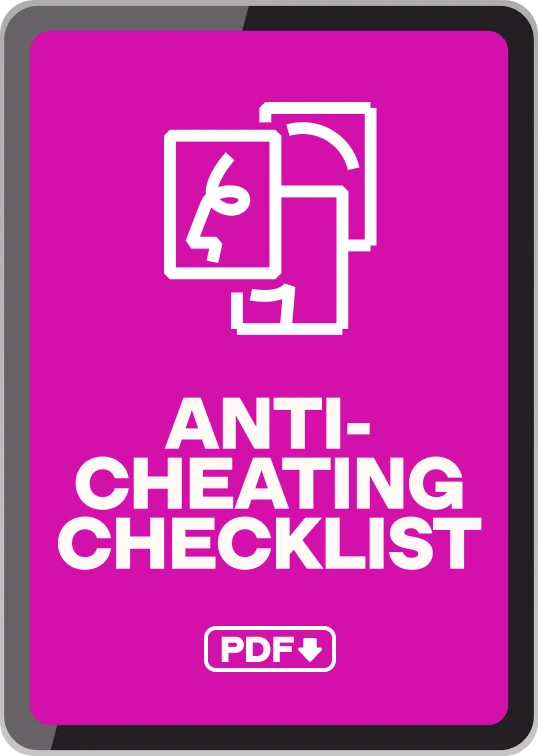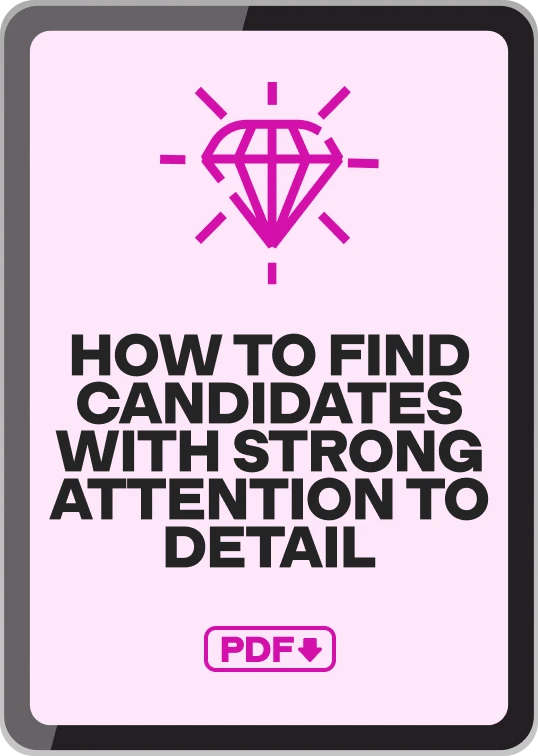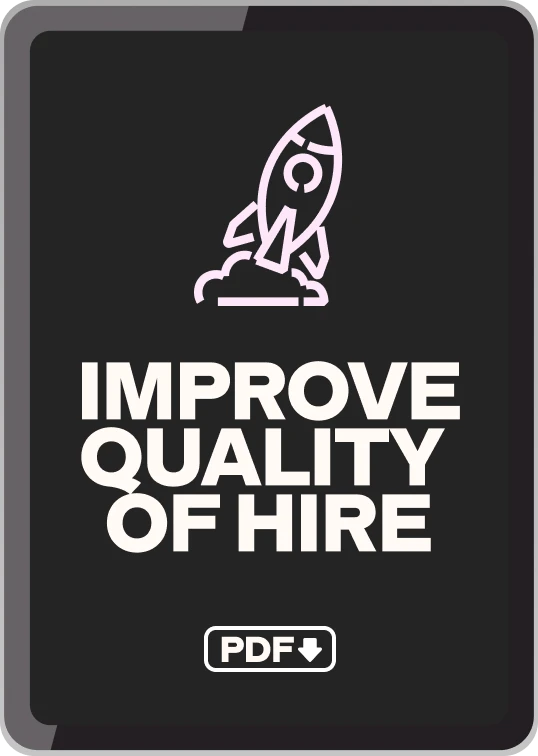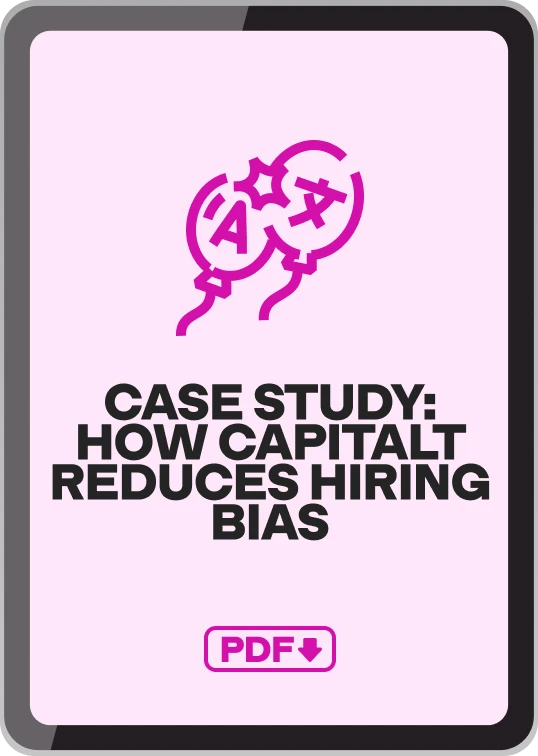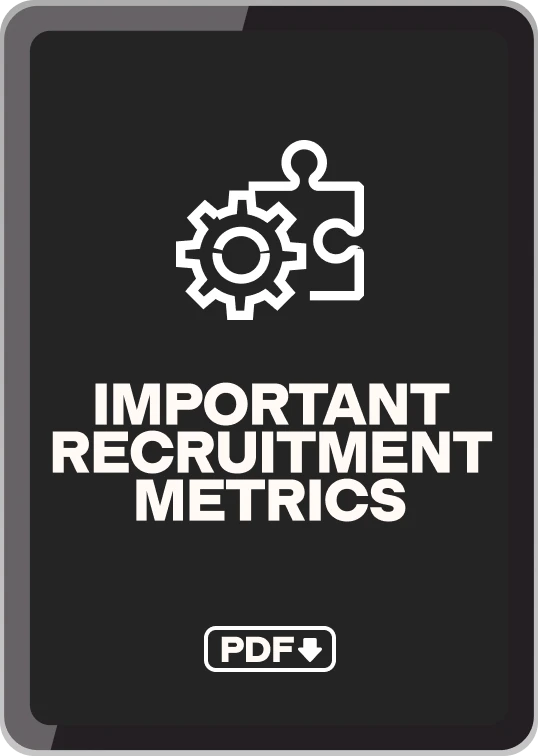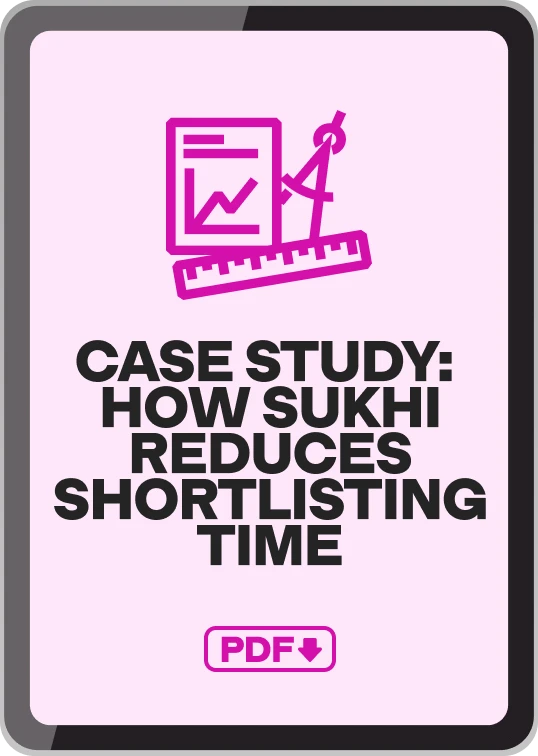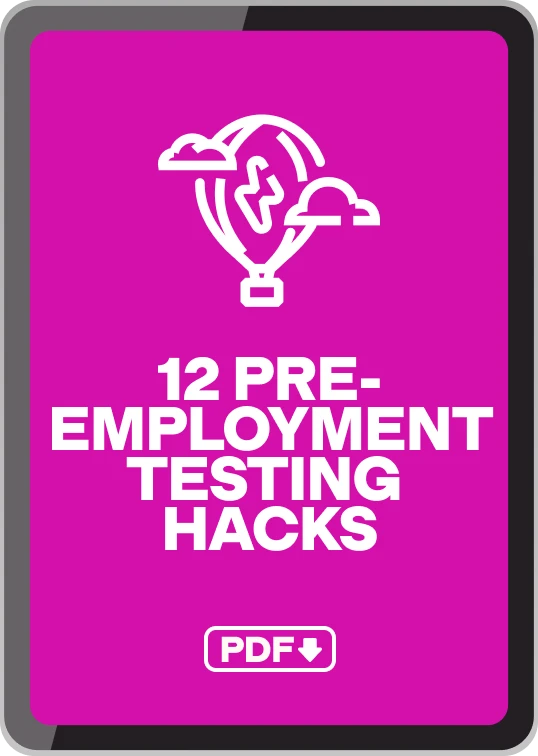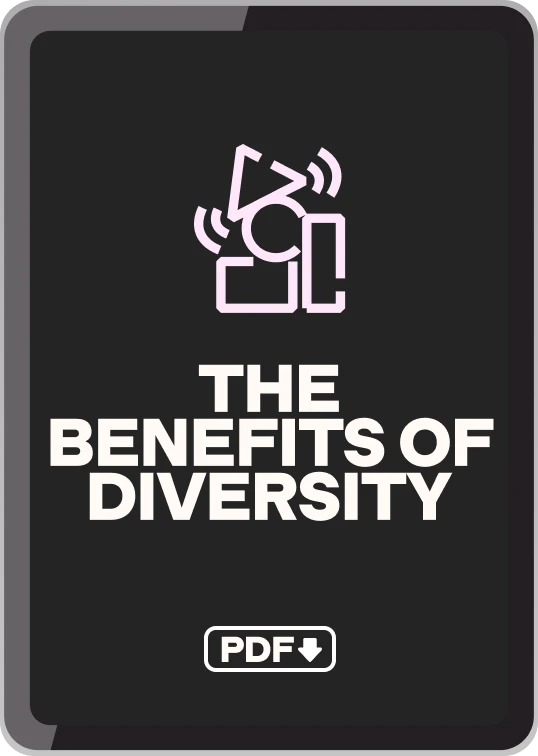How to hire for AI proficiency with TestGorilla
Artificial intelligence (AI) is no longer just an innovative tool but a fundamental skill set across various roles. As a result, hiring people skilled at understanding and leveraging AI tools has become essential.
In response to this, we’ve been focussed on developing cutting edge, industry-leading AI-related skills tests. This science series blog delves into the importance of AI skills, and the role of multi-measure assessments in hiring for them. It also provides insights into how to use TestGorilla to hire for roles that require people who are capable of developing and managing AI products, or people capable of leveraging AI tools to increase their productivity in their roles.
Table of contents
AI's Expansive Growth in the Workplace
AI's influence is undeniable. It is transforming how we work and make decisions. With the AI industry expected to balloon to a staggering $1.6 trillion by 2030, it’s clear that knowing your way around AI is becoming essential.
Almost every manager (95% of them, actually) says their team is already getting hands-on with AI tools, spotlighting the need for talent that can ride the AI wave like pros.
Wouter Durville, CEO here at TestGorilla, says that "ignoring AI proficiency in hiring for any role is like paddling out into the surf with a wooden board. But the tide has turned; every industry is riding the wave of automation and data. We should be paddling out, giving ourselves every opportunity to catch the next big one, not watching from the beach."
So, when scouting for new hires, weaving in AI know-how isn’t just smart—it’s setting you up to lead in a tech-driven future.
AI-Related Tests at TestGorilla
With AI's quick evolution comes a big challenge for employers: How do we reliably identify and hire candidates proficient in AI who can adapt, innovate, or even lead in adopting AI technologies? For TestGorilla's IP development team, this is a problem we're dedicated to solving for our users. We've been busy crafting a selection of AI-related tests that you can use to pinpoint talents who excel in the AI domain.
Below, I’ve outlined three AI-related test categories that we’ve been building at TestGorilla: AI Application Development, AI Integration and Management, and AI Utilization in specific fields. In each section you’ll find a bit of detail about the tests in each category and which skills they’re designed to help employers identify.
AI application development skills tests
These tests target the core of AI development, assessing candidates' ability to design, build, and implement AI models:
Artificial Intelligence test: Professionals skilled in AI can automate complex tasks, enhancing efficiency and enabling innovative solutions to operational challenges, optimizing your business’ processes and creating smarter products. Use this test to hire Software Engineers, AI Researchers, and Data Scientists.
Deep Learning test: Experts in Deep Learning can harness vast amounts of data to improve decision-making and predictive analytics, directly impacting marketing strategies, customer service, and product development. Use this test to hire Data Scientists, Machine Learning Engineers, and Deep Learning Specialists
Machine Learning test: Individuals with a solid grasp of Machine Learning principles can develop algorithms that predict customer behavior, improve product recommendations, and automate tasks. Use this test to hire Machine Learning Engineers, Data Analysts, and AI Product Managers. Also available: Machine Learning in Amazon Web Services (AWS) test, Machine Learning in Azure test, and Machine Learning in Google Cloud Platform (GCP) test.
Multi-Task Learning (MTL) test: Professionals skilled in Multi-Task Learning (MTL) can enhance the efficiency and effectiveness of AI models by training them on multiple tasks simultaneously. This improves the performance of the models on individual tasks, accelerates the learning process, and reduces the need for large datasets for training. Use this test to hire AI Researchers, Machine Learning Engineers, and Data Scientists.
Natural Language Processing (NLP) test: Specialists in NLP can revolutionize the way businesses interact with customers by improving chatbots, creating more effective search algorithms, and automating customer service responses. Their contributions can significantly enhance user experience and operational efficiency. Use this test to hire NLP Engineers, Chatbot Developers, and Content Strategists.
Neural Networks test: Those adept at designing and optimizing neural networks can create systems that mimic human intelligence, leading to more intuitive customer interfaces, sophisticated data analysis tools, and advanced predictive models. Use this test to hire AI Researchers, Robotics Engineers, and Software Developers.
Reinforcement Learning (RL) test: Experts in RL can develop systems that learn and improve from their environment, optimizing decision-making processes in logistics, resource allocation, and automated systems, thus driving efficiency and innovation. Use this test to hire Game Developers, Operations Research Analysts, and Automation Engineers.
TensorFlow test: Candidates proficient in TensorFlow can design, develop, and deploy highly accurate machine learning models. Their expertise enables the creation of advanced visual recognition systems and the automation of complex processes, directly contributing to enhanced product features, improved customer experience, and streamlined operations through innovative AI solutions and operational efficiencies. Use this test to hire Deep Learning Engineers, AI Product Managers, and Computer Vision Engineers.
PyTorch test: Developers proficient in PyTorch can implement deep learning models to automate data analysis and enhance visual recognition systems, and develop predictive models. This offers businesses insights that drive strategic decisions and operational improvements. Use these tests to hire Deep Learning Engineers, Computer Vision Engineers, and Big Data Analysts.
Keras test: Professionals skilled in Keras are capable of leveraging the deep learning API to develop models that can significantly accelerate the pace of innovation, delivering solutions that are both efficient and scalable. Use this test to hire AI Developers, Machine Learning Engineers, and Data Scientists.
Scikit-learn test: Candidates proficient in Scikit-learn possess the ability to implement a wide range of machine learning algorithms for medium-scale data analysis. Scikit-learn is key to rapid prototyping and the development of machine learning models that are both efficient and transparent, and delivers insights and predictive models with a direct impact on business strategies and operational efficiencies. Use this test to hire Data Scientists, Machine Learning Engineers, and AI Researchers.
Coding: Data Structures test series: Mastery in fundamental programming and data structures is crucial for developing efficient AI algorithms, leading to more robust software solutions, faster processing times, and reduced computational costs, directly benefiting product development and operational efficiency. Includes our Coding: Data Structures – Linked Lists test and Coding: Data Structures – Arrays test. Use these tests to hire Backend Developers, Software Engineers, and Systems Architects.
AI integration and management skills tests
These tests focus on the strategic implementation of AI in business processes and product development:
AI Product Manager test: AI Product Managers guide the strategic direction of AI projects, ensuring that AI solutions are designed to meet user needs and business objectives. Their expertise can streamline product development, enhance user satisfaction, and ensure that AI deployments contribute positively to the company's bottom line. Use this test to hire Product Managers, Strategy Consultants, and Project Managers.
Machine Learning in Cloud Platforms tests (AWS, Azure, GCP): Professionals adept in applying machine learning within cloud environments like AWS, Azure, and GCP enable companies to leverage the vast computational resources and specialized AI tools offered by these platforms to optimize operations, reduce costs, and drive innovation at scale by boosting data analytics capacity, automating processes, and scaling AI solutions efficiently. Use these tests to hire Cloud Solutions Architects, DevOps Engineers, and Data Engineers.
Human-Computer Interaction Design test: Professionals skilled in this area craft user-friendly AI interfaces, enhancing interactions between technology and users, making AI accessible and improving user experiences across devices and systems. Use this test to hire UX/UI Designers, Product Designers, and Interaction Designers.
Skills tests for AI utilization in specific fields
These tests focus on the ability to work with AI applications to increase efficiency, innovation, and safety across various sectors.
Working with Generative AI test: Using generative AI to craft content is a crucial skill for roles in creative industries, marketing, and product development, enabling professionals to push the boundaries of creativity and efficiency. Use this test to hire Content Creators, Marketing Specialists, and Administrative Assistants.
Computer Vision test: Experts in AI-driven computer vision can automate and enhance analysis of visual data, significantly improving applications in surveillance, retail analytics, and medical imaging, making processes smarter and more efficient. Use this test to hire Computer Vision Engineers, Surveillance System Designers, and Retail Analysts.
Content Moderation test: Utilizing AI for content moderation enables professionals to efficiently monitor and manage online content, ensuring digital environments are safe and align with community standards, crucial for maintaining user trust. Use this test to hire Social Media Managers, Community Managers, and Compliance Officers.
IBM Watson test: Leveraging IBM Watson, specialists can use AI to transform business processes to provide actionable insights and automate complex tasks, boosting productivity and innovation. Use this test to hire Business Analysts, Cognitive Systems Engineers, and Customer Experience Managers.
PySpark test: Professionals who are experts in PySpark, the Python API for Apache Spark, are able to process large datasets across distributed computing environments, which is vital to handling real-time data processing and analytics and, therefore, developing scalable AI solutions. Use this test to hire Big Data Analysts, Data Engineers, and Machine Learning Engineers.
Working with Midjourney test: With skills in generating AI-driven visuals, creators can produce high-quality images for a wide range of applications, enhancing creative projects and marketing content with speed and scale not previously achievable. Use this test to hire Graphic Designers, Digital Artists, and Creative Directors.
Testing AI skills in custom questions and tests
Our platform also provides the flexibility to craft custom tests and questions tailored to your unique requirements. Here are some ideas for how you can use these features to test for real-world AI skills:
Design a company coding test or a custom Code question that simulates real-world engineering challenges your team faces. You can choose which coding languages that candidates can use, but we suggest that the most creative solutions will be devised if you allow them the freedom to select the language and use AI tools. This approach not only assesses technical skills but also innovation and the ability to leverage AI effectively in problem-solving. Use this approach to hire Software Developers, AI Engineers, and Data Scientists.
Create a custom Essay question that challenges candidates to produce written content that meets the criteria that are important to you by leveraging AI. Time limits can be set at between 1 minute and 3 hours, meaning you can assess a candidate's ability to quickly generate ideas and articulate them coherently, or the ability to use it for research purposes and develop a piece that develops a topic in far more depth. This approach assesses a candidate's versatility in adapting AI tools to meet your company’s specific content creation needs. Use this approach to hire Content Strategists, Marketing Specialists, and Research Analysts.
Add a custom File upload question to invite candidates to share a portfolio of projects they have developed with AI tools. As the time limit can be set at up to seven days, you could also ask them to create a new piece that meets your specified criteria. This approach invites candidates to demonstrate their practical experience with AI, offering you insight into their project management skills, technical proficiency, and innovative capabilities. Use this approach to hire Graphic Designers, UX/UI Designers, and Multimedia Artists.
Include a custom Video question that asks candidates to respond by recording a short video. You could challenge them to give a short presentation on a topic key to your team, encouraging them to leverage AI when preparing it, as you would want them to in the real world. Another option is to ask them to talk openly about how they leverage AI tools to boost their productivity on a daily basis. This approach offers a well-rounded view of their potential fit within the team by evaluating their communication skills, their comfort with presenting ideas, and their practical application of AI in enhancing daily productivity. Use this approach to hire Public Relations Managers, Training Coordinators, and Team Leaders.
Adding one or more of these customizable options to your assessment will ensure a thorough evaluation of each candidate's AI skills in a way that closely aligns with the specific needs of the role you're looking to fill.
The value of human qualities: Make it multi-measure
However, understanding the technical side of AI isn't enough; weaving tech know-how with uniquely human skills is essential. This approach isn't just about ticking boxes; it's about finding people who can make AI more relatable, ethical, and innovative. As Wouter says, “We're after talent who can blend their AI smarts with a human touch. They're pushing tech boundaries while also making sure what we do hits home with our customers, turning good ideas into great business wins." Therefore, you’ll need to test for more than AI-related skills.
Multi-measure testing, as part of a holistic hiring process, isn't just a method; it's part of a mission to ensure that the tech we create and use really resonates with human values. It's about scouting talent that's tech-savvy yet human-centric, ensuring that our AI future is both brilliant and beautifully human.
When looking to hire for AI-related roles, we suggest looking for:
Creativity and Innovation: Unleash potential for out-of-the-box solutions using tests such as the Design Thinking test and the Problem Solving test.
Empathy and Emotional Intelligence: Foster an environment where technology meets human needs using tests such as Motivation and Big 5 (OCEAN).
Critical Thinking: Drive informed decision-making through analytical skills using tests such as the Critical Thinking test and the Computational Thinking test.
Ethical Consideration: Ensure AI is used responsibly and ethically using tests such as the Business Ethics and Compliance test and the Intellectual Property (IP) Law test.
Build a holistic hiring process with TestGorilla
It’s more important than ever for you to discover the right blend of skills and innovation for your teams. Luckily, our IP Development and Science & Assessment Innovation teams are making sure that our test library has you covered.
TestGorilla helps you seamlessly and efficiently unlock the full AI-powered potential of your workforce by making identifying AI-savvy talent a breeze. Check out the tests mentioned in this blog or book a demo to get started – and keep your eyes peeled as we work on upcoming AI-related tests!
Science series materials are brought to you by TestGorilla’s team of assessment experts: A group of IO psychology, data science, psychometricians, and IP development specialists with a deep understanding of the science behind skills-based hiring.
Related posts
You've scrolled this far
Why not try TestGorilla for free, and see what happens when you put skills first.
Latest posts
The best advice on pre-employment testing, in your inbox.
No spam. Unsubscribe at any time.

Hire the best. No bias. No stress.
Our screening tests identify the best candidates and make your hiring decisions faster, easier, and bias-free.
Free resources
This checklist covers key features you should look for when choosing a skills testing platform
This resource will help you develop an onboarding checklist for new hires.
How to assess your candidates' attention to detail.
Learn how to get human resources certified through HRCI or SHRM.
Learn how you can improve the level of talent at your company.
Learn how CapitalT reduced hiring bias with online skills assessments.
Learn how to make the resume process more efficient and more effective.
Improve your hiring strategy with these 7 critical recruitment metrics.
Learn how Sukhi decreased time spent reviewing resumes by 83%!
Hire more efficiently with these hacks that 99% of recruiters aren't using.
Make a business case for diversity and inclusion initiatives with this data.







